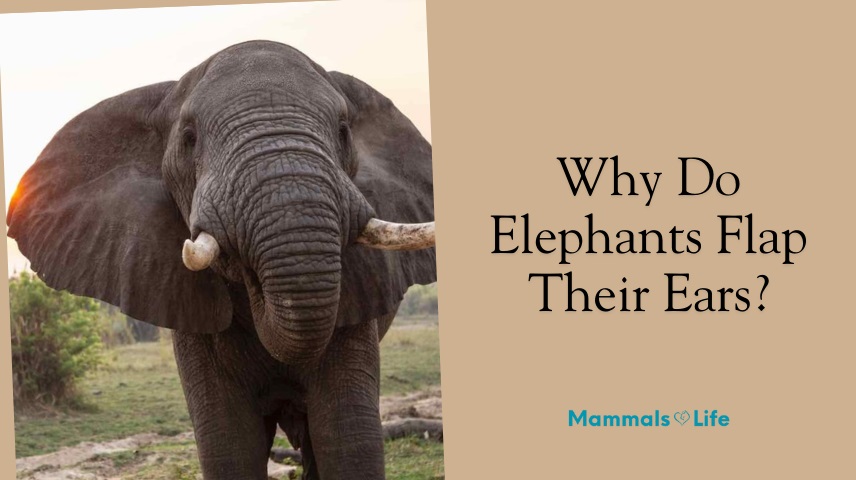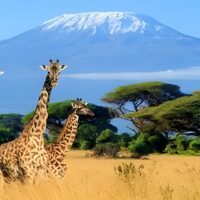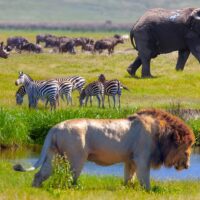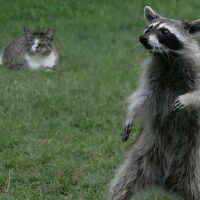Last Updated on February 23, 2025 by Mammals Life
Elephants are known for their impressive size and gentle nature. Their large ears are a distinctive feature.
Have you ever watched an elephant and wondered why they flap their big, fan-like ears? It’s a fascinating behavior that has intrigued many. Elephants are not just flapping their ears for fun; there’s a practical reason behind this action. At first glance, it might seem like these gentle giants are just trying to hear better or shoo away flies.
But the truth is, elephants flap their ears as part of a clever cooling system. They have a network of blood vessels in their ears, and flapping them helps to regulate their body temperature. It’s like their own personal fan on a hot day! This intro will take you on a journey to understand the science behind this behavior. It will explore how these majestic creatures use their ears for communication and survival in their natural habitat. Join us as we uncover the secrets behind the ear flapping of elephants, and learn more about these amazing animals.

Credit: www.facebook.com
The Significance Of Ear Flapping In Elephants
Elephants flap their ears to stay cool. Think of their ears as big fans. They wave them to move air. This helps to cool their blood. Big blood vessels run through an elephant’s ears. When the air hits them, it takes away the heat.
Ear flapping is also a way elephants talk to each other. They might be saying “hello” or showing they’re boss. Sometimes, they flap to scare away bugs. It’s a smart move for such big animals.

Credit: www.shentonsafaris.com
Anatomy Behind The Action
Elephant ears are big. They help keep the body cool. The ears have many blood vessels. When elephants flap their ears, air moves over the vessels. This cools the blood inside. It’s like a fan for their body. This helps in temperature regulation.
The structure of an elephant’s ear includes thin skin. This allows heat to leave fast. Big ears also pick up sounds from far away. They help elephants hear calls of friends and danger too.
Elephants In Their Natural Habitat
Elephants flap their ears for many reasons. It helps them stay cool. Imagine a fan. Their ears work like that. Big ears catch more air. This cools them down in hot places. They live where it’s often very warm. So, this is very important.
Ear movements also mean something among elephants. A flap or a twitch can tell another elephant if they are happy, scared, or angry. It’s like they are talking without words. Friends or family in a group watch these signs. This way, they understand each other better.

Credit: www.youtube.com
Conservation Efforts And The Future
Climate change affects all creatures, big and small. Elephants are no exception. Hotter temperatures can change where food and water are found. Elephants travel long distances to survive. Their ear flapping helps them stay cool. But with rising heat, they may flap more than ever.
Many people and groups work hard to protect elephants. They want to keep them safe and healthy. This work helps the elephants keep doing what they do. Like flapping their ears. But we must act fast. Our climate is changing quickly. Time is running out. We must find ways to slow down the warming of our planet.
We can all help in small ways. Saving energy, planting trees, and talking about climate change are good starts. Every action counts. Protecting elephants is just one reason to care about our Earth’s future.
Conclusion
Understanding elephant ear flapping reveals much about these gentle giants. They do it to cool down, communicate, and express emotions. Remember, their ears are more than just hearing tools. They serve key roles in the elephant’s survival and social life.
Elephants’ ears are unique, so is their use. Next time you see an elephant, notice the ear dance. It’s nature’s way of showing us how animals adapt and thrive. Keep these fascinating facts in mind. They help us appreciate the wonders of wildlife even more.








